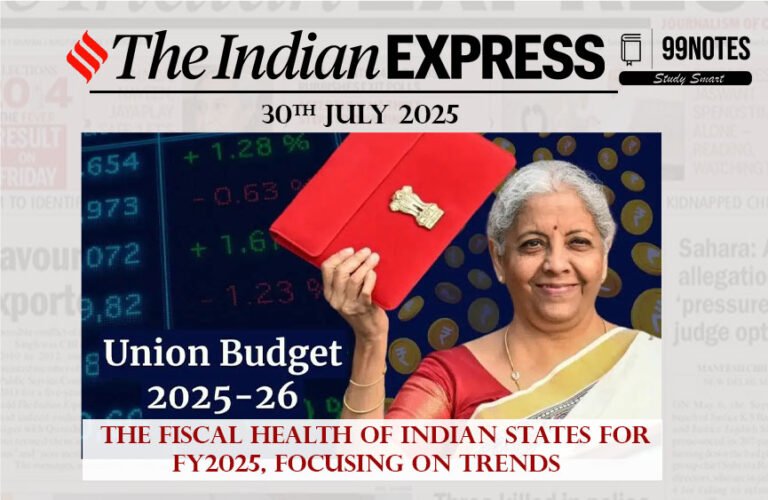4 Oct 2023 : Indian Express
Indian Express
4-October-2023
1) India Maldives Relations
Topic: GS2-IR
Context:
- Pro-China leader Mohamed Muizzu has won the Presidential election in Maldives.
- This article will discuss the challenges that the new government will pose for India’s foreign policy establishment.
Details
India-Maldives bilateral Relations:
- Due to their shared ocean boundary, India and the Maldives are neighbors.
- Strategic, economic, and military collaboration have all taken place in a cordial and intimate relationship.
- India continues to support the island nation’s efforts to ensure security.
Historical relations:
- Both countries were colonies of Great Britain.
- After the Maldives gained their independence in 1965, India was one of the first nations to recognize them and establish diplomatic ties with them. In 1972, India opened a mission in Malé.
- India and the Maldives have friendly, multifaceted relations and share ancient ethnic, linguistic, cultural, religious, and commercial ties.
Political relations:
- In multilateral fora like the UN, Commonwealth, NAM, and SAARC, India and the Maldives have continuously backed one another.
- High connectivity: High People-to-People connections due to Air India’s daily flights from Thiruvananthapuram, Bangalore, and Chennai to Malé.
- Tourism: Due to its close proximity and recent advancements in air connectivity, the number of Indian tourists and business travellers to the Maldives has significantly increased (to the tune of about 33,000).
- Soft diplomacy: Maldivians frequently travel to India for business, leisure, medical care, and education.
- Diaspora: Indians make up the second-largest group of expatriates in the Maldives.
Why Maldives matters to India?
- Strategic Location: Due to their location in the Indian Ocean, the Maldives is of strategic importance to India under the ‘Neighbourhood First’ policy of the Modi government.
- One of the busiest shipping lanes in the world is the Eight Degree Channel.
- Peace and security in the Indian Ocean can be guaranteed by the Maldives’ stability, maturity, and democratic system.
Major challenges:
Chinese influence:
- Even as it continues to place the utmost importance on the island nation, India has been particularly concerned about the growing Chinese influence in the Maldives.
- Growing worries have been expressed about China’s influence on the Maldivian economy through so-called “debt-trap diplomacy.”
- Due to loans from China used to fund numerous of its infrastructure projects, the Maldives now owes around $1.4 billion.
- A free trade agreement had also been signed between China and the Maldives.
Measures taken so far:
- Prime Minister Modi travelled to the Maldives as soon as he took office for a second time in May of last year.
- In addition, he was the lone head of state present at Ibrahim Mohamed Solih of the Maldives’ swearing-in ceremony in November 2018, the month in which Yameen was deposed.
- Additionally, India provided the Maldives with a $ 1.4 billion package of development aid, which is being put to use in a number of projects.
- An attempted coup on the island nation was foiled in 1988 by an intervention by the Indian military forces, known as “Operation Cactus.”
- India was the first country to react when mercenaries attacked the Maldives on November 3, 1988.
- When the tsunami struck the Maldives in 2004, Indian naval ships were sent to help in rescue efforts.
- During the water crisis in Male, ships from the Indian Navy and Air Force brought water in four hours.
Way forward:
- Lessons from the past: India steadfastly refrained from taking military action against the Yameen dictatorship despite numerous appeals for involvement. With the help of other interested parties, New Delhi carefully planned its diplomatic response and applied tremendous pressure on Yameen to conduct the presidential elections fairly and transparently. India today finds itself in a favourable situation, therefore it appears that this patience has paid off.
- Approach with caution: India must exercise caution if it wants to prevent a situation similar to that in Nepal, where the Nepali people turned against New Delhi due to its perceived meddling in that country’s internal affairs. The only way for the Maldives to move forward is to leave a smaller diplomatic imprint.
2) The mRNA Promise
Topic: GS3-Science and Tech
Context:
- The 2023 Nobel Prize for Medicine has been jointly awarded to United States scientists Katalin Kariko and Drew Weissman for their work concerning “nucleoside base modifications that enabled the development of effective messenger ribonucleic acid (mRNA) vaccines against COVID-19”.
About their contribution in vaccine development:
- The discoveries and findings by Kariko and Weissman fundamentally changed the understanding of how mRNA interacts with the human immune system.
- This contributed to the unprecedented rate of vaccine development during one of the greatest threats to human health in modern times.
What are mRNA vaccines and how do they work?
- Each vaccine stimulates an immune response by introducing a small amount of a certain bacterium or virus into the body. The majority of vaccines contain dead or weakened germs or viruses.
- Instead of using a piece of a real bacteria or virus, scientists have created a new kind of vaccine that uses a molecule known as messenger RNA (mRNA).
- A particular kind of RNA called messenger RNA is required for the synthesis of proteins. When cells are done producing a protein, they swiftly degrade the mRNA. Vaccine-derived mRNA does not enter the nucleus and does not change DNA.
- A little portion of a protein typically located on the viral outer membrane is introduced as part of an mRNA vaccine’s delivery mechanism. (People who receive an mRNA vaccination are not exposed to the virus and cannot contract the infection through the vaccine.)
- Cells can manufacture the viral protein by utilising this mRNA. The immune system recognises that the protein is foreign as part of a typical immunological response and creates specialised proteins known as antibodies.
- By identifying specific viruses or other pathogens, adhering to them, and designating the pathogens for eradication, antibodies aid in the body’s defence against infection. In order for the immune system to promptly react if exposed again, antibodies that have already been created stay in the body even after the body has cleansed itself of the infection.
- Antibodies can swiftly identify a virus if a person has received an mRNA vaccination for it, attach to it, and designate it for death before it may seriously harm them.
Need for mRNA based vaccines and challenges in developing them:
- Producing whole virus-, protein- and vector-based vaccines requires large-scale cell culture, which limits the possibilities for rapid vaccine production in response to outbreaks and pandemics.
- Genetic information encoded in human DNA is transferred to messenger RNA (mRNA) in the body’s cells and is used as a template for protein production.
- Scientists were able to produce mRNA without cell culture in the 1980s, in a process known as in vitro transcription. But there are two challenges associated with it:
- In vitro transcribed mRNA was considered unstable and challenging to deliver, requiring the development of sophisticated carrier lipid systems to encapsulate the mRNA.
- In vitro-produced mRNA gave rise to inflammatory reactions.
How Kariko and Weissman improved the mRNA vaccine technology?
- Kariko and Weissman noticed that dendritic cells (which have important functions in immune surveillance and the activation of vaccine-induced immune responses) recognize in vitro transcribed mRNA as a foreign substance, which leads to their activation and the release of inflammatory signaling molecules.
- They wanted to test a hypothesis as to whether the absence of altered bases in the in vitro transcribed RNA could explain the unwanted inflammatory reaction.
- RNA contains four bases, abbreviated A, U, G, and C, corresponding to A, T, G, and C in DNA, the letters of the genetic code.
- They produced different variants of mRNA, each with unique chemical alterations in their bases, when they delivered it to dendritic cells the found that:
- Inflammatory response was almost abolished when base modifications were included in the mRNA. And,
- It markedly increased protein production compared to unmodified mRNA.
- After the outbreak of the COVID-19 pandemic, two base-modified mRNA vaccines encoding the SARS-CoV-2 surface protein were developed at record speed.
- Such vaccines have resulted in saving millions of lives and prevented severe disease in many more, allowing societies to open and return to normal conditions.
Conclusion:
- The advantages of the mRNA vaccine approach are numerous and, in addition to being used as a vaccine, mRNA can also be used as a protein supplement or replacement therapy to treat other diseases, driving the necessary research to overcome the current obstacles and limitations with the ultimate goal of developing an ideal form of medicine.
For Enquiry

4 Oct 2023 : Indian Express

4 Oct 2023 : PIB

4 October 2023 : Daily Current Affair

4 October 2023 : The Hindu Editorial Notes PDF

3 Oct 2023 : Daily Quiz

3 Oct 2023 : Indian Express

3 Oct 2023 : Daily Answer Writing

3 Oct 2023 : PIB

3 October 2023 : Daily Current Affair

3 OCT 2023 : The Hindu Editorial Notes PDF
Indian Express 4 Oct 2023 : Indian Express Indian Express
3-October-2023
1) BIHAR CASTE CENSUS
Context:
The Bihar caste survey was released by…
October 2023 PIB 4 Oct 2023 : PIB PRESS INFORMATION BUREAU
4-Oct -2023
1. CCI approves acquisition of majority stake in Indira IVF by…
Daily Current Affairs 4 October 2023 : Daily Current Affair Daily Current Affairs
4-October-2023
1. NewsClick founder arrested under UAPA.
Topic: GS2 – Indian…
October 2023 The Hindu 4 October 2023 : The Hindu Editorial Notes PDF The Hindu Editorial
4-October-2023
1. The trouble with a Nobel for mRNA COVID vaccines
Topic: GS3…
Daily Quiz 3 Oct 2023 : Daily Quiz 3 Oct 2023 : Daily Quiz…
Indian Express 3 Oct 2023 : Indian Express Indian Express
3-October-2023
1) BIHAR CASTE CENSUS
Context:
The Bihar caste survey was released by…
mains answer writing 3 Oct 2023 : Daily Answer Writing Mains Answer Writing
3-october-2023
1) Highlight the key differences in the scope of Freedom of speech…
October 2023 PIB 3 Oct 2023 : PIB PRESS INFORMATION BUREAU
3-Oct -2023
1. PM performs darshan and pooja at Sanwariya Seth Temple in Chittorgarh,…
Daily Current Affairs 3 October 2023 : Daily Current Affair Daily Current Affairs
3-October-2023
1. Medicine Nobel 2023 goes to duo who paved the way for mRNA COVID…
October 2023 The Hindu 3 OCT 2023 : The Hindu Editorial Notes PDF 1. Criminal law Bills and a hollow decolonisation
Topic: GS2 – Indian polity
Introduction
The…



